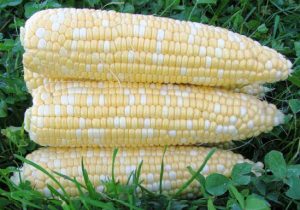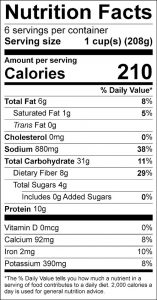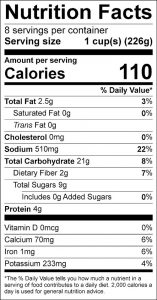Bulletin #4253, Vegetables and Fruits for Health: Sweet Corn

Revised and updated by Assistant Extension Professor Nadine B. Reimer, University of Maine Cooperative Extension.
Originally developed by Extension Nutrition Specialist Nellie Hedstrom, University of Maine Cooperative Extension.
For information about UMaine Extension programs and resources, visit extension.umaine.edu.
Find more of our publications and books at extension.umaine.edu/publications/.
Sweet corn is one of the late summer favorites in Maine. The native crop is available in local farmers markets, as well as in many large supermarket chains that support locally grown produce. Cooked and eaten straight from the garden, it is a special treat.
Nutrition Information
Sweet corn is a good source of many nutrients. A medium-sized ear of corn has about 75 calories and one gram of fat. It supplies carbohydrates, protein, and potassium, and is a good source of dietary fiber. Other nutrients include thiamin (vitamin B1), pantothenic acid (vitamin B5), folate, dietary fiber, vitamin C, phosphorous, and manganese. Corn also contains beta-carotene, and is a useful source of protein.
Selection
Freshness and cool storage after harvest are the secrets to getting good quality corn when shopping. When held in warm temperatures, the sugar in the corn changes to starch. Corn will taste less sweet. Super-sweet varieties hold the sugar content longer than regular corn varieties. When buying corn, look for ears stored in refrigerated bins at local stores or held in the shade or on ice at farmers’ markets or roadside stands. Choose corn that is picked daily. Shop early in the day to get the freshest ears. Look for husks that are tight, green, and fresh-looking. The stalk should be green and moist and the silk still moist, soft, and light in color.
Storage
Corn is best if cooked and eaten within a few hours of picking, so try not to store it long if possible. If you do have to store corn, leave it in the husk until you are ready to cook it. Storing corn in a perforated plastic bag in the crisper of your refrigerator is best.
Preparation
When it comes to cooking, corn is very versatile. Sweet corn can be prepared in or out of the husk using a variety of methods. Fresh corn from the garden is usually left on the cob, but cutting kernels off the cobs is an option.
Boiling or Steaming: After husking, cook corn by placing ears upright in a stockpot with 1 to 11/2 inches of water. Cover the pot and let it steam for about seven minutes after boiling begins. Or lay ears in a pan, with two to three quarts of water. To sweeten the pot, add about three tablespoons of sugar, and boil for about four minutes. Adding salt to the water can make the corn firmer. Do not overcook.
Microwaving: Corn can also be microwaved in or out of its husk. For the best flavor, remove the outer husks, letting the inner husks remain. After microwaving, pull the husks downward to remove them along with the silk. Or husk and clean each ear, wrap it in waxed paper or plastic wrap or place in a glass dish with a cover, and cook for about two minutes per ear.
Roasting/Grilling: You can grill sweet corn in the husk or out of it. For a milder flavor, soak the corn in husks in cold water, then place them on a hot grill and cook until they’re evenly heated on all sides — from 10 to 15 minutes. Husking first gives a much more intense grilled-corn flavor, and will only take five to seven minutes. Turn occasionally to expose all surfaces to the heat. Open fire pits allow you to bury the ears in coals. Wrap them in several layers of foil and cover with coals for 10 to 15 minutes.
Corn Chili
Serves 6 (1-cup servings)
1 onion, chopped
1 clove garlic
2 tablespoons olive oil
1/2 cup green pepper
1 teaspoon chili powder
1 cup chopped tomato
1 cup corn, cut from cob
4 cups cooked kidney beans
1 1/2 teaspoons salt
1/2 teaspoon oregano
dash cayenne pepper
Sauté onion and crushed garlic clove in oil until onion is soft. Add green pepper and chili powder. Sauté another few minutes. Add tomatoes and corn. Add beans to pot along with the salt, cayenne pepper, and oregano. Simmer 30 minutes.
Corn and Tomato Soup
Serves 8 (1-cup servings)
1/2 onion, chopped
1/2 cup celery, chopped
1 clove garlic
1 tablespoon olive oil
4 cups corn, cut from the cob
4 cups tomato, chopped
1/2 cup water
1 teaspoon salt
2 tablespoons fresh chives or scallions, chopped
1 tablespoon fresh tarragon, chopped
Sauté onion, celery, and crushed garlic in olive oil in a heavy 3-quart pan until tender. Add corn and tomatoes, water, and salt to sautéed vegetables. Simmer on low heat, covered, for about 30 minutes. Just before serving, stir in chives and tarragon.
Some content adapted with permission from University of Massachusetts Cooperative Extension.
Information in this publication is provided purely for educational purposes. No responsibility is assumed for any problems associated with the use of products or services mentioned. No endorsement of products or companies is intended, nor is criticism of unnamed products or companies implied.
© 2008
Call 800.287.0274 (in Maine), or 207.581.3188, for information on publications and program offerings from University of Maine Cooperative Extension, or visit extension.umaine.edu.
In complying with the letter and spirit of applicable laws and pursuing its own goals of diversity, the University of Maine System does not discriminate on the grounds of race, color, religion, sex, sexual orientation, transgender status, gender, gender identity or expression, ethnicity, national origin, citizenship status, familial status, ancestry, age, disability physical or mental, genetic information, or veterans or military status in employment, education, and all other programs and activities. The University provides reasonable accommodations to qualified individuals with disabilities upon request. The following person has been designated to handle inquiries regarding non-discrimination policies: Director of Institutional Equity and Title IX Services, 5713 Chadbourne Hall, Room 412, University of Maine, Orono, ME 04469-5713, 207.581.1226, TTY 711 (Maine Relay System).



